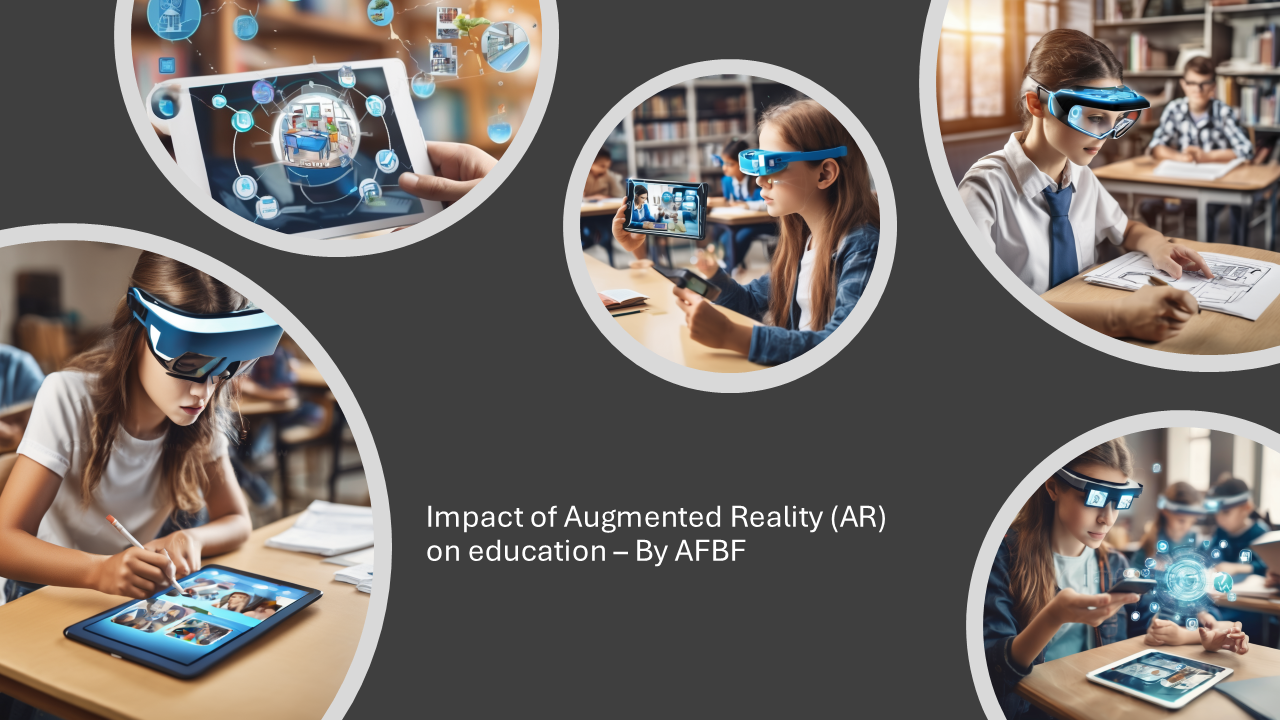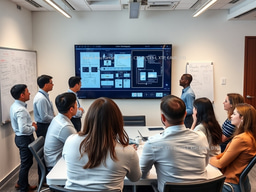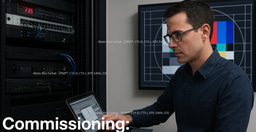Impact of Augmented Reality (AR) on Education sector

The educational landscape is undergoing a significant transformation, driven by technological advancements that are reshaping how students interact with and understand content. At the forefront of this revolution is Augmented Reality (AR), a technology that has the potential to fundamentally alter the way we teach and learn. This shift promises not only to enhance engagement but also to deepen understanding and make learning experiences more interactive and immersive.
1-Understanding Augmented Reality:
Augmented Reality (AR) is a technology that overlays digital content—such as images, videos, sound, and other data—onto the real world. Unlike Virtual Reality (VR), which creates a completely immersive virtual environment, AR enhances our perception of the real world by adding digital elements that interact with our physical surroundings. This is achieved through devices such as smartphones, tablets, AR glasses, and headsets, which use cameras and sensors to blend digital information with live views of the physical world.
2.Revolutionizing Education Through AR
2.1 Making Abstract Concepts Tangible:
One of the most profound impacts of AR in education is its ability to bring abstract concepts to life. Traditionally, students learn about complex subjects such as chemical reactions, anatomical structures, or historical events through textbooks and static images. While these resources are invaluable, they often fall short in conveying the dynamic and interactive nature of these concepts. AR bridges this gap by providing students with interactive 3D models and simulations that they can explore in real-time.
For instance, in a chemistry class, instead of merely reading about molecular interactions, students can use AR goggles to visualize and manipulate molecular structures, observe reactions from multiple angles, and understand the dynamic processes involved. This hands-on approach makes complex subjects more accessible and comprehensible, transforming abstract ideas into tangible, interactive experiences.
2.1 Enhancing Student Engagement:
Engagement is a crucial factor in effective learning, and AR has the potential to significantly boost student interest and involvement. Traditional educational methods often rely on passive learning, where students listen to lectures or read from textbooks. AR, on the other hand, introduces an interactive dimension that actively involves students in the learning process.
By integrating AR into the classroom, educators can create immersive learning experiences that captivate students' attention and encourage active participation. For example, history lessons can be enhanced with AR by recreating historical events or landmarks that students can explore as if they were physically present. This immersive experience not only captures students’ imaginations but also fosters a deeper connection to the subject matter.
2.3 Facilitating Hands-On Learning:
AR technology enables a hands-on learning approach that can be particularly beneficial in fields that require practical experience. In science and engineering education, for example, AR can simulate laboratory experiments and engineering processes, allowing students to practice and refine their skills in a virtual environment before applying them in real-world scenarios.
This hands-on experience is invaluable for developing problem-solving abilities and critical thinking skills. Students can experiment with different variables, test hypotheses, and see the outcomes in a controlled virtual setting, which helps them build a solid foundation of knowledge and experience that can be applied in practical situations.
2.4 Personalizing Learning Experiences
Every student learns differently, and AR technology offers the potential for personalized learning experiences that cater to individual needs and preferences. AR applications can be designed to adapt to different learning styles, providing customized content and interactive elements based on the learner’s pace and understanding.
For example, AR tools can offer interactive tutorials, visual aids, and practice exercises tailored to a student’s level of comprehension. This personalization not only enhances the learning experience but also helps educators address diverse learning needs and ensure that all students have the opportunity to succeed.
2.5 Improving Accessibility:
AR has the potential to improve accessibility in education by providing support for students with diverse needs. For students with visual or auditory impairments, AR can offer alternative ways to access content, such as through enhanced visual cues, auditory descriptions, or interactive touch-based interfaces.
Moreover, AR applications can be designed to include features that support students with learning disabilities, such as interactive diagrams, speech-to-text capabilities, and other assistive technologies. By incorporating these features, AR can create a more inclusive learning environment that accommodates a wide range of abilities and learning preferences.
3 .Challenges and Considerations:
While the potential benefits of AR in education are substantial, there are several challenges and considerations that need to be addressed to fully realize its potential:
3.1 Technology Integration:
The successful implementation of AR in education requires seamless integration with existing educational tools and curricula. Educators need to ensure that AR applications align with learning objectives and complement traditional teaching methods. Additionally, schools must invest in the necessary hardware and software, which can be a barrier for institutions with limited resources.
3.2 Content Development:
Creating high-quality AR content that is both educationally effective and engaging requires significant expertise and resources. Content developers must work closely with educators to design AR experiences that are pedagogically sound and aligned with educational standards. This collaboration is essential to ensure that AR applications provide meaningful learning experiences.
3.3 Training and Support:
Effective use of AR technology in the classroom requires adequate training and support for educators. Teachers need to be familiar with AR tools and applications, understand how to integrate them into their teaching practices, and be prepared to address any technical issues that may arise. Professional development and ongoing support are crucial for maximizing the benefits of AR in education.
3.4 Privacy and Security:
As with any technology, AR raises concerns about privacy and security, particularly when it involves collecting and processing personal data. Educational institutions must ensure that AR applications comply with data protection regulations and prioritize the privacy and security of students' information.
Finally , Augmented Reality represents a significant leap forward in educational innovation, offering transformative possibilities for how we teach and learn. By making abstract concepts tangible, enhancing student engagement, facilitating hands-on learning, personalizing experiences, and improving accessibility, AR has the potential to revolutionize the educational landscape.
As AR technology continues to evolve and become more integrated into educational practices, it is essential for educators, content developers, and policymakers to collaborate and address the challenges associated with its implementation. With careful planning and execution, AR can unlock new dimensions of learning and create enriching educational experiences that inspire and empower students.
The future of education is indeed bright, with AR technology leading the way in creating immersive, interactive, and impactful learning environments. As we embrace these advancements, we pave the way for a more engaging and effective educational experience for learners of all ages.
-
Xchange Advocates are recognized AV/IT industry thought leaders and influencers. We invite you to connect with them and follow their activity across the community as they offer valuable insights and expertise while advocating for and building awareness of the AV industry.
Recommended Content
LetsTalkAVbyAlexis Series: Episode 4 : Design Begins With People: Engineering AV Systems Around Real End-User Requirements

LetsTalkAVbyAlexis Series : Episode 2: Network & AV Convergence (AVoIP)





Please sign in or register for FREE
If you are a registered user on AVIXA Xchange, please sign in